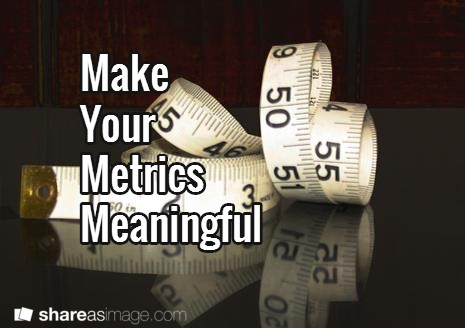
One of the things I love about working in digital media is the accountability of the metrics. If you can do it, you can measure it, but should you? Finding the metrics that matter for your business, and getting people inside and outside to understand what you track and why it matters, are just as important as what those numbers look like.
With the Commercial Radio Association research council finally starting to consider what digital metrics should look like in the radio industry, this is something that’s near and dear and top of mind right now so I thought I’d share my do’s and don’ts for meaningful metrics.
Do:
Understand what drives your business: If you’re in a media business that sells impression-based advertising, you’ll be looking at page impressions. For e-commerce sites, email click-throughs and abandoned carts will be burned into your brain. Measuring what drives your business helps give focus to what you’re doing every day.
Get granular: When you’re looking at your drivers, it’s not just about the final number; you want to understand every metric you can impact along the way. Breaking down the key metrics to their most granular form helps you to understand who you can task – editors might have a role to play in delivering the audience, but it’s your digital producers who need to take charge of engagement.
Translate it into something meaningful: If you are in a digital team in a non-digital business, or talking to boards, investors or clients who don’t necessarily speak fluid geek, it helps to find the right equation. I’ve found talking about Unique Audience as related to “circ” or “cume” is a great way to knock down resistance to digital metrics and start creating a team of people all focused on the same goal.
Measure the things you don’t win: I’m often really tempted to ignore this one, but if you don’t acknowledge where you don’t win you can’t grow. Understanding where you need to improve helps give credibility to the success you do achieve and gives focus for the metrics you need to improve in your next reporting period.
Have a history and a target: “We hit 500!” Great! What was it this time last month? Last year? What did you want it to be? You have to understand the numbers in the context of where you’re coming from and where you’re going to, especially if you’re sharing these numbers with people who may not be living and breathing them as closely as you are each day.
Look at the competition: If you’re in an industry or area where your audience or clients have a choice, you need to know how the comparison stacks up and what they’re measuring. Any day you’re not thinking about the story your competition is telling to your clients is a day you could lose them.
Don’t:
Obsess about the competition: The flipside of course is that the day you start creating strategies or metrics that are about ‘beating the competition’, you’re not a customer-centric business. Each of your competitors will have a nuance to how they approach the audience which means that what’s right for them isn’t right for you – otherwise you’re just a replica.
Use vanity metrics: Another frequent temptation, especially in a business that has triple digit growth in nearly all web, mobile and social metrics. It’s really, really tempting to make that our headline, but unless the actuals back it up, I stay away. Meaningful metrics need context and they need to connect to something that actually shifts the dial, not just something that feels good to say.
Change the rules to suit this week: One month of reporting video views per person, followed by a month of reporting aggregates, just lets people know the previous metrics aren’t telling the story you want anymore. Tough metric conversations are your chance to explain your strategy for turning it around or the market conditions that mean it’s no longer relevant.
Over complicate: Keep It Incredibly Simple. This isn’t just for your intended reporting audience, it does you a big favour too. Metrics need sweating every day, week and month. The more you tie yourself in knots, the harder it will be to make them meaningful and help you achieve your goals for growth, engagement, accountability or whatever drives you and your business.
Sell what you can’t measure: Back to the beginning – the blessing and the curse of digital media is its accountability. This doesn’t mean that you need to focus on click-through rates, ROI is as much about the combination of medium, message and campaign, and each aspect of these can be measured. Media have been selling on recall and branding, it’s something as an industry we can do better.
Go rogue: It wouldn’t be an IAB blog without pointing out that the IAB has some excellent resources to help navigate the myriad of things you can track, where to find the best sources for your business and understand what the standards look like. There’s some amazing expertise in this organisation, use it!